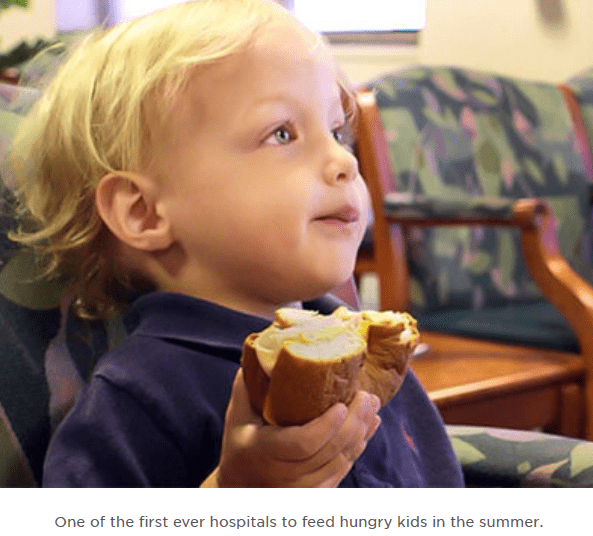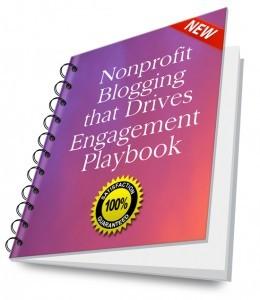
The Best Online Strategies are Multi-Layered
In Part 1 of this two-part article I described the importance of:
- Beginning with your well-oiled content marketing engine and plan.
- Building an intentional donor-centered content marketing plan.
- Building an online fundraising campaign strategy that’s integrated with your content marketing plan.
Part 1 also included links to a lot of articles I’ve written previously about mastering online social fundraising. Some of them are on Clairification. Others are guest posts I’ve done for other blogs.
I truly, passionately, want you to master the integration of a robust online communications and fundraising strategy with an equally robust offline strategy. In our digitally revolutionized world, they are two halves of a whole.
You need to rock them both.
Today we’re going to layer on with some other important essentials if you want to succeed with your online fundraising.
Your Donate Button Doesn’t Stand Alone
I know you may be resistant to building an online campaign strategy due to limited resources. You think you’re good to go with your donate button and a simple link in your email or e-newsletter.
Not true.
Slapping a donate button up on your Home Page and hoping folks will see it does not an online social fundraising campaign strategy make.
If you really want to drive donations, you need a compelling integrated campaign plan (more on that below) that meshes with your overall organizational content marketing strategy and encompasses multiple communications channels — your website, email, social media and video.
Your campaign strategy must be designed to move folks emotionally. The decision to give is triggered by the heart, not the head. Emotion trumps reason. Reason is used to rationalize decisions made by emotion.
Drive Folks to You; Trigger Their Desire to Give
Once you do drive folks to your website with your compelling, integrated online campaign, these are the basic ingredients to get folks to click on your ‘Donate’ button:
- Decide on one compelling story you want to tell. People are wired for stories, and will capture folks’ attention in a way that facts and figures will not.
- Put a face to your plea for help. Be aware of the ‘identifiable victim effect.’ Beware the numbing effect of scale, which leads to scope insensitivity and a feeling one’s donation is a mere ‘drop in the bucket.’ Show people, with words and images, who or what they are helping. Make it something they can grasp.

Giving is triggered by showing, telling and asking.
Offer Specific Goals + Deadlines + Calls to Action
Once you’ve developed the story you want to share, ask yourself: “What do I want folks to do when they receive this message?”
If you seriously want people to donate, you do have to actively ask them!
This is what your online fundraising engagement cycle looks like:
- Set specific dollar and purpose goals for your campaign. How much do you want to raise, for what purpose and within what timeframe? Work backwards from your deadline to schedule a series of email appeals. You may also want to schedule social media posts to support your email campaign.
- Make your calls to action clear. Show your donor exactly how they can become your hero. People like to know what you expect of them. Generic appeals that go to generic action buttons simply won’t generate the return on engagement that specifically targeted campaigns will. Donors want to know where their money will go and how it will help.
- Make your calls to action urgent. Leverage your appeal with a challenge grant, or an end-of-year appeal to give to get a tax deduction, or an appeal to give to get folks off your waiting list or prevent doors from closing. Don’t let folks put your appeal aside for later.
- Make it easy to respond to your call to action. People like to follow step-by-step directions.
- Coordinate all your actions. Make sure your content, images and design connect.
- Plan for follow-up once your supporter invests. This is how you’ll retain donors, and in the long-run this is what makes your cost/benefit work out.
Consider Multiple Campaigns Throughout the Year
It’s well established by now that more asks lead to more gifts.
Don’t confine your online fundraising campaign to the end of the year. I used to send quarterly appeals, each one for a different and specific project. Year-end raised the most, but the others were quite respectable.
Plus (and this is important!), send non-ask emails to warm folks up. If you only send communications that ask for money, folks will get fed up pretty quickly. But if you send lots of other types of messages (e.g., genuine, delightful thank you’s; information people can use and impact reports), that’s a horse of a different color.
Use the 3:1 formula for email communications:
For each ask for support, send three communications that speak to donors’ hearts and don’t ask for money. You can send these via email, e-newsletters or your blog.
In addition, continue to send engaging messages via social media. This is where the “Rule of 7” comes into play (BTW: These “rules” are not hard and fast. They’re simply guidelines).
You can still ask for actions that get folks engaged (e.g., Please retweet, Please sign this pledge, Please comment, Please post a photo, Please complete this survey). These types of communications are great for engaging folks and have the effect of pre-suading them to give when you ultimately do make your appeal.
Important Review of Parts 1 and 2: Steps to Integrate Online with Offline Campaigns
Coordinate everything. Integrate not only online and offline, but also your content marketing with your fundraising strategy.
1. Begin with your well-oiled content marketing engine and plan. Put everything in writing. Allocate budget and hire/train staff. It won’t happen in a vacuum, and it won’t build itself.
2. Develop your comprehensive campaign content strategy. One compelling story + specific call to action.
3. Set up an email campaign that bolsters your direct mail campaign. Email is the preferred method of communication for a majority of people, and has the best ROI of any marketing channel – bringing in $40 for every $1 spent. And once you have someone’s email, you can control messaging to these readers. You don’t have to wait for them to find you accidentally by searching on Google or through social media.
A. Collect email addresses. If you don’t have good mechanisms for collecting emails, put this on your list as a priority ‘To-Do.’ Ideas for collecting email addresses include:
— Big, bold sign-up box on your website Home Page or elsewhere. Offering incentives for signing up, like a a “how to” list or video, whitepaper, reading list, recipes, inspiring quotes, free ticket, etc., will increase participation).
— Asking for this information on your donation remit pieces, donor landing pages and even social media with a plea to “help us save paper” or “help us communicate news to you as it happens.”
— Asking for business cards at events (again, offering an incentive like a raffle prize can help).
— Asking for emails in your e-signature.
B. Pay attention to your ‘from’ sender and your subject lines. These are critically important if you want your emails to get opened. Make sure your subject line is short and offers benefits for those who open it.
C. Fewer choices translates to greater engagement and investment. Include just one call to action per email. If you offer too many choices, folks are likely to choose none. It’s call “analysis paralysis.” [Learn more about the famous jam study here]
D. Optimize your email for mobile. More and more, folks will quite likely use a mobile device to read your emails. By making some simple tweaks, you can ensure a superior experience for these readers.
4. Build a compelling donation landing page that’s easy to use. [Learn to avoid common mistakes here]
5. Build a thank you landing page that sets up your next gift strategy to retain your donors. [Get ideas to improve yours here]
6. Add on social media strategies as resources allow. This is another great addition to your next gift strategy, enabling you to provide constituents with an opportunity to learn more about areas of particular interest, offer opinions and advice, and get their questions answered. Your overall goal is to drive folks back to your website, where they’ll find more of your most compelling content. Plus hopefully they’ll sign on to your email list, enabling you to contact them more directly.
FINALLY: Just Do It!
Practice makes perfect.
The key to successful online fundraising (and anything else for that matter) is doing it. It won’t happen on its own. And the more you do it, the better you’ll get at it.
Please let me know if this makes sense to you. If not, what obstacles stand in your way?
Want to Rock Your Online Content via a Blog?
 Get started with the Nonprofit Blogging “Get Started” Workbook. It includes your user-friendly worksheet, tips, tools, templates and more to get you started with a blog that can become the hub of your content marketing strategy. Stop being the best kept secret in town, it’s time to start rocking a blog filled with content your constituents – including prospective donors – are looking for.
Get started with the Nonprofit Blogging “Get Started” Workbook. It includes your user-friendly worksheet, tips, tools, templates and more to get you started with a blog that can become the hub of your content marketing strategy. Stop being the best kept secret in town, it’s time to start rocking a blog filled with content your constituents – including prospective donors – are looking for.
Photo by Claire Axelrad as part of a series: The Art of Philanthropy – ‘Love of Humankind’ – as Seen Through the Prism of the World’s Art Museums






Found your blog. This is a very good blog on Online Fundraising Campaigns. I would like to thank you for all the information you give. Its really important to choose the best online fundraising strategy.so thanks for sharing this information.